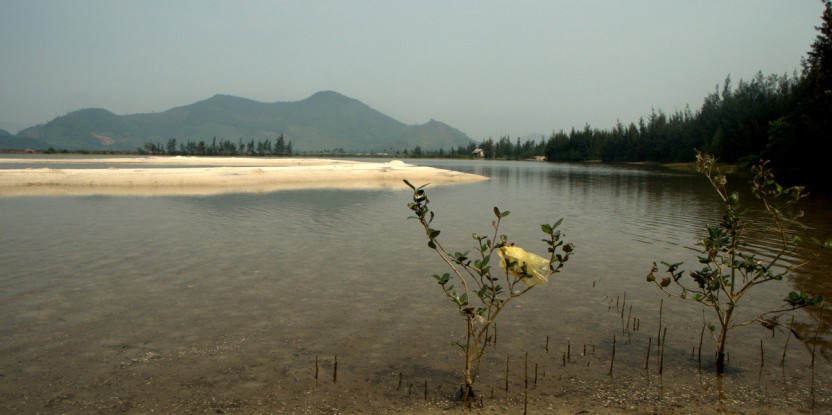RIO DE JANEIRO, Brazil (19 June 2012)__ Maintaining and rehabilitating natural ecosystems like mangroves may be the most cost-effective way to help protect cities on small islands from rising sea levels, according to preliminary findings from a study in Fiji.
Climate change experts looking at Lami, a vulnerable coastal settlement, estimate money spent on improving existing natural ecosystems would bring twice the benefits to the dollar as investments for building dams and other protective barriers. The findings are indicative and should not be viewed as a general solution, noted authors from the UN Environment Program, UN Habitat and Secretariat of the Pacific Regional Environment Programme (SPREP).
“Ecosystem-based adaptation has to be considered against other alternatives,” said Jacqueline Alder, Head of the Freshwater and Marine Ecosystem Branch at the United Nations Environment Programme. “In the case of Lami, we could demonstrate that doing things like mangrove rehabilitation is probably more cost effective as a climate change adaptation strategy,” she said at a side event held in conjunction with the Rio+20 summit.
Fiji, a group of small islands in the Pacific Ocean, is especially vulnerable to climate change. Sea levels are projected to rise 18-79 centimeters this century, according to current trends – even higher if ice-sheet melting continues to accelerate. As a result, experts are trying to find ways to help communities adapt. Approaches that use and improve existing natural resources are attractive, in part, because they have the additional benefits, such as to provide food and income for local communities and capacity to store carbon.
Coastal ecosystems including mangroves are being threatened by increasing pressures from urban and industrial developments, as well as fish and shrimp farms. A 30% to 50% decline in mangroves over the past half-century has raised fears that they may disappear altogether in as little as 100 years.
The coastal ecosystems in Lami provide services valued at an estimated FJD100,000 (USD54,750) per household per year, according to the assessment. This is another factor to be considered when comparing ecosystem-based adaptation and engineering options. Around 11,000 people live in Lami, according to 2007 data.
Aside from its functions to protect coasts from increased sea level and storm surges, mangroves have been proven to hold more than four times more carbon than upland tropical forests, according to a study by the Center for International Forestry Research (CIFOR) and the USDA Forest Service published in Nature GeoScience last year. The destruction and degradation of mangrove ecosystems may be generating as much as 10% of all the global deforestation emissions despite accounting for just 0.7% of tropical forest area.
We want you to share Forests News content, which is licensed under Creative Commons Attribution-NonCommercial-ShareAlike 4.0 International (CC BY-NC-SA 4.0). This means you are free to redistribute our material for non-commercial purposes. All we ask is that you give Forests News appropriate credit and link to the original Forests News content, indicate if changes were made, and distribute your contributions under the same Creative Commons license. You must notify Forests News if you repost, reprint or reuse our materials by contacting forestsnews@cifor-icraf.org.
Further reading
Mangroves among the most carbon-rich forests in the tropics
Tropical wetlands initiative: For climate adaptation and mitigation
Ecosystem-based Adaptation Decision Support - Moving from Principles to Practice
Adapting tropical production forests to global climate change: Risk perceptions and actions
